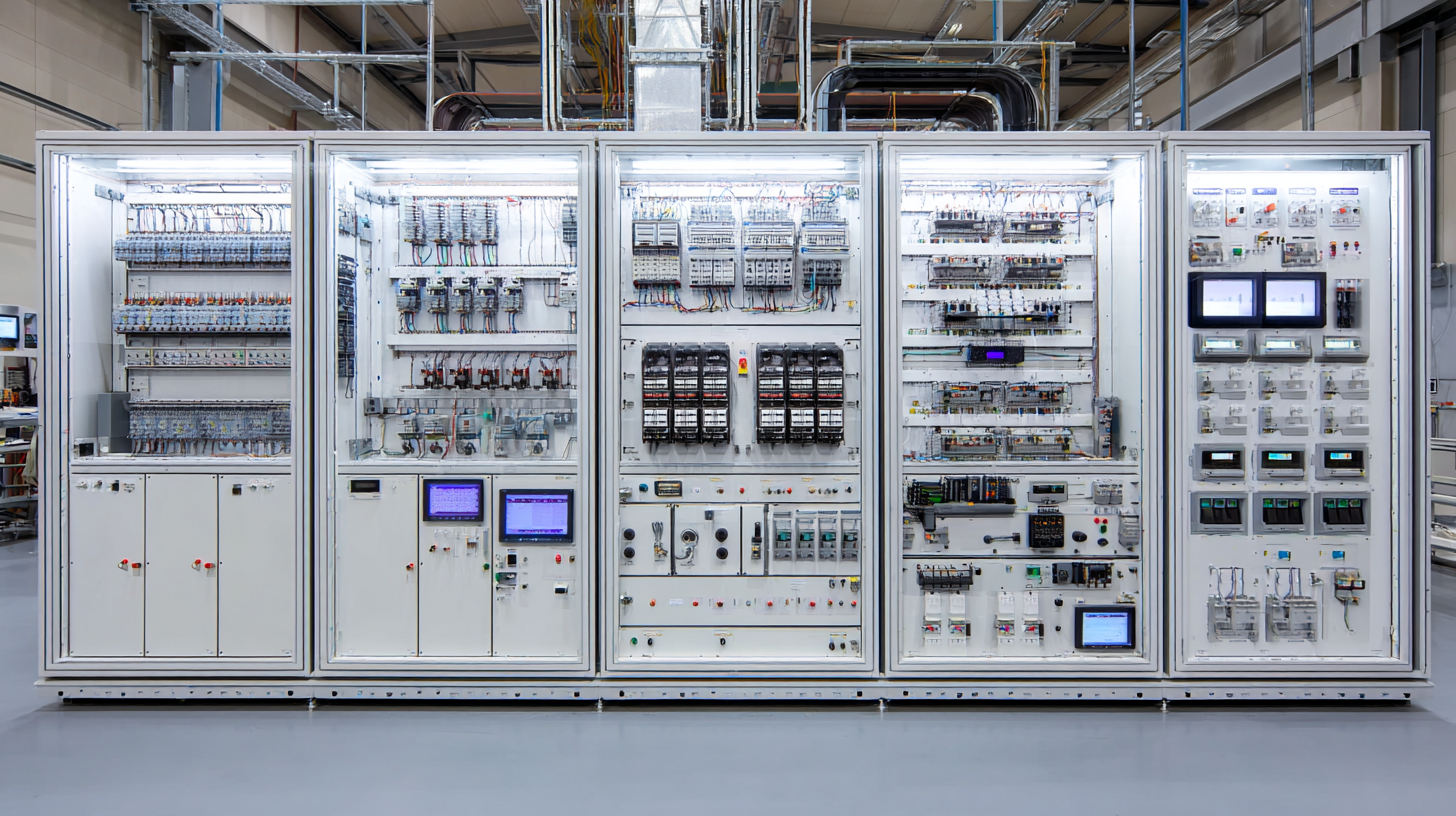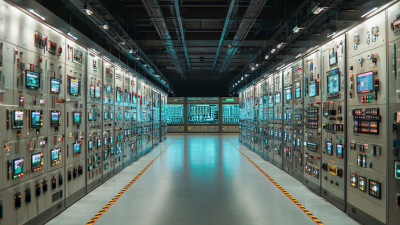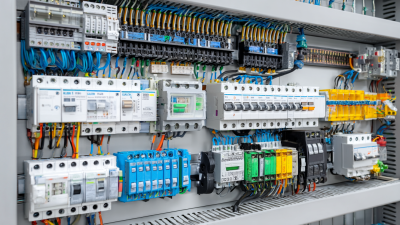The landscape of power systems is undergoing a significant transformation, driven by technological advancements and evolving consumer needs. As we approach 2025, the focus on the distribution system in power systems has become increasingly crucial. This essential component serves as the backbone of electricity delivery, facilitating the movement of power from substations to end-users. Innovations emerging within this realm promise to enhance efficiency, reliability, and sustainability, responding to the growing demand for cleaner energy solutions.

In our exploration of the "Top 10" innovations revolutionizing the distribution system in power systems, we will delve into groundbreaking technologies such as smart grids, energy storage systems, and advanced metering infrastructure. These innovations not only optimize operations but also empower consumers with greater control over their energy usage. As we move forward, the integration of renewable energy sources and the adoption of electric vehicles will further challenge and reshape the existing distribution frameworks. By highlighting these transformative changes, we aim to provide a comprehensive understanding of how the distribution system in power systems is evolving to meet the challenges of tomorrow.
The advent of innovative grid technologies is set to revolutionize the distribution efficiency in power systems by 2025. According to the International Energy Agency (IEA), the integration of smart grid technologies can lead to a 20-40% reduction in energy losses during distribution. This remarkable potential is attributed to advanced metering infrastructure, real-time data analytics, and automated demand response systems, which collectively enhance operational efficiency and reliability.
Moreover, the deployment of distributed energy resources (DERs) is gaining traction, with the Global Energy Storage Market Report projecting a growth rate of 22.7% from 2020 to 2025. These resources not only alleviate stress on traditional grid infrastructures but also empower consumers to participate actively in energy management. The enhanced visibility and control afforded by innovative grid technologies facilitate a more resilient power distribution network, reducing outages and improving service quality for end-users. As we move towards 2025, these advancements are pivotal in achieving sustainable energy goals and ensuring a robust power supply to meet growing demand.
As we approach 2025, the integration of renewable energy sources into the evolving distribution network is set to reshape power systems significantly. With advancements in technology, the distribution network is becoming smarter and more capable of handling intermittent energy resources like solar, wind, and hydroelectric power. This transformation allows for increased energy efficiency as well as greater reliability and stability in our power supply.
Tips: To maximize the benefits of integrating renewable energy into your local distribution system, consider investing in energy storage solutions. These can help manage the supply-demand balance by storing excess energy generated during peak production times for use during periods of high demand. Additionally, engaging in community solar projects can foster collaboration and enhance access to renewable resources for localities.
Moreover, smart grid technologies play a crucial role in this integration. By utilizing advanced metering infrastructure and real-time data analytics, utilities can optimize power flow and reduce losses. The consumer also benefits, gaining more control over their energy consumption.
Tips: Participating in programs that incentivize energy-saving behaviors—like time-of-use rates—can significantly reduce costs and encourage more efficient energy use within the home or business. Adopting energy management systems can also lead to better tracking and monitoring of energy consumption patterns, aiding in the transition to a cleaner energy landscape.

The evolution of smart metering and data analytics is transforming the energy landscape, enabling greater consumer engagement and optimizing energy use. As companies adopt innovative strategies to reduce their environmental impact, these technologies play a crucial role in facilitating sustainable business practices. By harnessing real-time data from smart meters, utilities can provide consumers with detailed insights into their energy consumption patterns, empowering them to make more informed decisions and reduce waste.
The integration of advanced metering infrastructure within smart grids amplifies this transformation. It not only enhances operational efficiency but also paves the way for a more sustainable energy ecosystem. This shift towards a digital and greener approach is reflected in recent initiatives aimed at promoting a circular economy and utilizing renewable resources effectively, aligning with global sustainability goals.
As we approach 2025, the synergy between smart technologies and energy management systems is poised to revolutionize how energy is consumed and managed, underscoring the importance of innovation in shaping the future of power systems.
Decentralized energy systems are transforming the way power is generated and distributed, allowing local communities to take charge of their energy needs. By harnessing renewable resources such as solar and wind power, these systems reduce reliance on centralized grids and decrease transmission losses. Communities can utilize local resources more effectively, leading to a more resilient and sustainable energy infrastructure. The shift to decentralized systems not only fosters energy independence but also empowers citizens to actively participate in the energy transition.

Furthermore, decentralized energy systems enhance reliability and security. By generating power locally, communities can mitigate the effects of outages and fluctuations in the central grid. This localized approach can also help reduce the carbon footprint associated with long-distance energy transport, contributing to global sustainability goals. As communities adopt innovative technologies, such as energy storage and smart grid solutions, they can optimize their energy usage and ensure affordability. The move towards decentralized systems not only paves the way for economic growth but also promotes social equity by making energy access more inclusive.
The future of power distribution systems is being heavily influenced by evolving regulatory frameworks and policies. As per the International Energy Agency (IEA), global electricity demand is expected to grow by 2.1% annually until 2040, necessitating innovative strategies in distribution. Policymakers are increasingly focusing on integrating renewable energy sources and decentralizing power generation to improve resilience and efficiency in the distribution network. The adoption of smart grid technology is a critical component in this transition, enabling real-time monitoring and management of electricity flow.
Tips: When considering renewable energy integration, stakeholders should prioritize policies that promote energy efficiency and grid modernization. Engaging with local regulatory bodies can provide insights into upcoming policies that may affect distribution operations. Utilizing resources like the U.S. Department of Energy's reports on grid initiatives can help stakeholders stay informed about best practices.
Furthermore, governments around the world are recognizing the importance of incentivizing energy storage solutions and electric vehicle (EV) infrastructure. According to a report by the Rocky Mountain Institute, decentralized energy resources could account for up to 35% of global electricity generation by 2040. This shift calls for regulatory frameworks that support innovation while also ensuring equitable access and affordability for consumers. Advocating for policies that foster collaboration between utilities, technology providers, and consumers will be crucial to shaping an efficient and sustainable power distribution system for the coming years.
Tips: Engaging in public forums and discussions on energy policies can not only amplify your voice but also provide valuable networking opportunities with other industry stakeholders.





